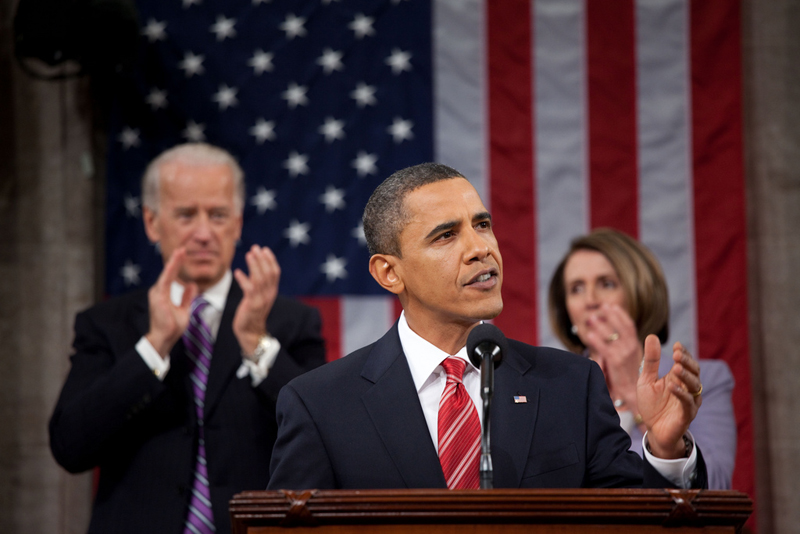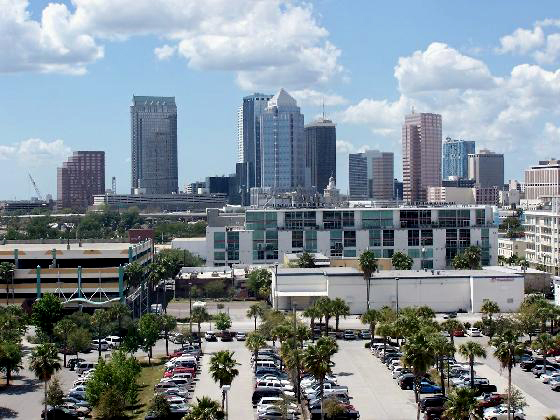A Country of Cities
A series of opinion pieces in which Vishaan Chakrabarti casts key current events as rallying cries in his evolving argument for urban density, for a Country of Cities.
We are celebrating 15 years — and counting — of stories that are deeply researched and deeply felt, that build a historical record of what the city has been.
“…we can put Americans to work today building the infrastructure of tomorrow. From the first railroads to the interstate highway system, our nation has always been built to compete. There’s no reason Europe or China should have the fastest trains…” –President Barack Obama, State of the Union Address, January 27, 2010.
It is a watershed moment when any President spares precious moments from a State of the Union address to utter such words. In 2007 candidate Obama had me at hello. Now the bar is higher, now he has me at hello, I want to build the Infrastructure of Tomorrow.
Yet as these pages have attempted to articulate, it is hard to bridge the gap between the President’s aspirations and the next sentence from his address: “Tomorrow, I’ll visit Tampa, Florida, where workers will soon break ground on a new high-speed railroad funded by the Recovery Act.” In referring to the $1.25 billion funding for the proposed 168mph train between Tampa and Orlando, one local politician told The New York Times “It’s the biggest thing since Walt Disney World for the I-4 Corridor.”
“We didn’t pick this based on politics. I mean this sincerely,” The Vice President stated unconvincingly at a Florida rally the next day. “We’re picking the places that make the most sense, have the highest density, are ready to go.” Yes, he was speaking of Tampa and Orlando, those high density places. Clearly in this instance, Tomorrowland took priority over Tomorrow.
But perhaps it’s time to take a pause from the criticism.
Many progressive readers, in digesting my last entry here on Urban Omnibus, were upset by my intense criticism of the President’s health care initiative. To be sure, most agreed with the emphasis on infrastructure – they just want both. The money for both, they argued, could come from higher taxes or fewer wars. Some were shocked to read that I believe the “AFPAK” situation to be a true existential threat, and therefore support the President’s troop deployment.
But perhaps none of these arguments are pertinent. Perhaps what is pertinent is that we have a President who uses the word “infrastructure” in his State of the Union address. That we have a Vice President who uses the word “density.” (I think Dick Cheney used this word only in relation to his former boss.) Perhaps in the ever-maddening world of Washington D.C. – the clearinghouse for the representatives of exurban America – such baby steps are as good as it gets.
Yet it is still confounding that the best we can get is $8 billion towards high-speed rail when we need at least $150 billion for all of the major corridors including California, Chicago-St. Paul, Char-Lanta, the Northeast, and yes, Florida. It is confounding when the Vice President states that the $1.25 billion investment in the Tampa-Orlando corridor will generate more than 23,000 jobs over four years, and that by extension one hundred times that investment nationwide might create 2,300,000 jobs. Now that would be stimulus.
But perhaps we should take solace in the fact that the President refers to the $8 billion as a “down payment.” Perhaps he knows that a true victory would be to leverage California’s state bond issue to bring true high-speed rail — as defined by international standards rather than by Amtrak — to the West Coast cities. Perhaps in the subtle use of the words “down payment,” in a Presidency in which every word matters, Obama is signaling that he will get to it all someday, if he can just win Florida in 2012.
Yet to state that “there’s no reason Europe or China should have the fastest trains,” is, with all due respect, disingenuous. Of course there are reasons. Those societies revel in their urban density, and they have the ability to allocate resources efficiently toward that end. China may soon overtake America in automobile production, but it also just unveiled the world’s fastest passenger train. At a top speed of 217mph, the Harmony Train if operating here would propel us from New York to Charlotte in approximately three hours, eliminating an enormous amount of the nation’s regional air traffic.
Folks, when you read this stuff, doesn’t it just scare the bejesus out of you?
Recently I attended a terrific conference on vertical density in Hong Kong. Representatives from Hong Kong, Shanghai and New York were in attendance. An urban planning scholar explained that the construction underway in Shanghai for their rapid transit system will lead to 196km of new subway lines by 2020. By comparison, I sheepishly explained the joys of helping to extend the #7 line here in New York, which as a 2km extension now under construction is one of the first meaningful expansions of our century-old system in decades.
Of course critics will reply that China is authoritarian, and that it is an emerging economy going through a transformation mirroring our own industrial revolution. One conference attendee replied that “mature” economies don’t build infrastructure the way China or India must. Yet in his address the President rightly raised Europe as well as China. If one compares New York’s recent attempts to rebuild Penn Station versus London’s St. Pancras or Berlin’s Hauptbahnhof, if one looks at the expansion of rail lines in eastern London versus New York’s struggles to get a new Trans-Hudson tunnel built, one realizes that excuses of being too mature or too democratic to build infrastructure are simplistic expressions of complacency.
To be in Hong Kong illustrates this vividly. I hadn’t visited in over a decade, and in that time more density has been built, a few more skyscrapers dot the stunning skyline, but the advances one really notices are on the ground. The new airport. The 20-minute train from the airport to downtown. The gleaming subways that glide under Victoria Harbor from Kowloon to Central. The stunning new bridges and tunnels. The lush country parks.
Returning to the chaos of JFK, opting for the creaky cab over the Mickey-monorail to Jamaica, rumbling over the BQE, one is forced to ponder the distance between now and the President’s tomorrow.
Political arguments aside, the most popular concept generated from my last piece was “ASIA” (The American Smart Infrastructure Act), a proposed Federal bill that could – through the promotion of density and infrastructure – act as a silver bullet by simultaneously addressing climate change, our dependence on foreign oil, and health care costs. In essence, it is proposed legislation to get us to the Infrastructure of Tomorrow for all of our truly dense places. Given the current political climate, this silver bullet could happen.
Consider that with the Brown victory in Massachusetts, the Commonwealth that voted for Reagan in 1984 and has had multiple Republican governors since has largely sealed the fate of large-scale health care reform. (Side question: Shouldn’t Rahm, for all of our sakes, spend much more time with his family?)
Consider that improvements in the economy are yielding little new employment, causing economists to worry about the fading impact of last year’s stimulus bill.
Consider that with the private sector still ducking for cover, the Federal government remains the spender of last resort, remains the only entity able to infuse much-needed liquidity.
And consider that with a President who understands that he has only made a down payment on the Infrastructure of Tomorrow, he and we have an opportunity to double down on density.
The President has an opportunity to use repaid bank bailout funds and yes, taxation on outsized bonuses, to pave a path towards a second stimulus package, a package that combines a jobs bill, a Cap and Trade bill, and a Federal transportation bill. This White House is too smart to put the word “infrastructure” in the limelight without knowing that it polls well. Americans know our physical environment is crumbling. Americans are traveling more. From “Weeds” to “The Wire,” they know in their hearts we have a predicament. To be sure, the deficit will be the issue. For good or bad, the deficit is an abstraction that to date has never won or lost an election. But more importantly, the right investments can be argued as a means to reduce the deficit.
So three cheers for Tampa. It is a start. Tampa and Orlando could be much denser, much more transit rich, and much more sustainable, but they are cities after all. And as we build them, perhaps we can make a bigger bet and double down on density nationwide. Perhaps the odds are with us. Perhaps we can build A Country of Cities.
The views expressed here are those of the authors only and do not reflect the position of The Architectural League of New York.
A series of opinion pieces in which Vishaan Chakrabarti casts key current events as rallying cries in his evolving argument for urban density, for a Country of Cities.



Comments